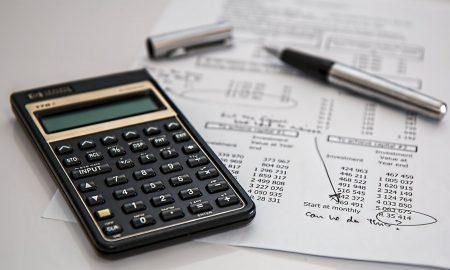
What Is a Good APR for a Credit Card?

What is a good APR for a credit card? Essentially, an Annual Percentage Rate for a credit card is the interest rate you will pay on any outstanding balance. It is an important number to consider because it can significantly affect how much you end up paying if you do not clear your balance each month.

Olly / Pexels / 16-18% is generally a good APR for a credit card.
What is a Good APR for A Credit Card?
Generally, a good APR for a credit card is one that falls below the average rate, which typically hovers around 16-18%. Anything lower than this range is considered favorable.
What Is APR and Why Does It Matter?
APR stands for Annual Percentage Rate. It is a yearly interest rate that includes fees and other costs associated with your credit. When you carry a balance on your credit card, the APR determines how much interest you will pay over a year. Understanding what a good APR for a credit card is can help you minimize the interest you pay and keep your debt under control.

Karolina / Pexels / APR is crucial because it directly impacts the cost of borrowing. If you have a high APR, you will pay more in interest.
Thus, this can quickly add up if you carry a balance. Conversely, a lower APR means you will pay less in interest, making it easier to manage and repay your debt.
How to Find a Good APR for a Credit Card
Finding a good APR for a credit card requires a bit of research and an understanding of your credit profile. Here are some steps to help you secure a favorable rate:
- Compare Offers: Never settle for the first credit card offer you receive. Compare different cards and their APRs. Look for promotional offers that include 0% APR for an introductory period.
- Read the Fine Print: Some credit cards offer low introductory APRs that increase after a certain period. Ensure you understand when and how the APR might change.

Olly / Pexels / Your credit score is a key factor in determining the APR you will be offered. Higher scores typically qualify for lower APRs. Check your credit score regularly and take steps to improve it if necessary.
Plus, if you have a good credit score and a solid repayment history, do not hesitate to negotiate with your credit card issuer for a lower APR.
How APR Affects Your Card Balance
The APR on your credit card affects your balance by determining how much interest you will pay if you carry a balance from month to month. Here is how it works:
- Daily Interest Calculation: Credit card companies typically calculate interest on a daily basis. They use your APR to determine your daily periodic rate by dividing the APR by 365 days.
- Compounding Interest: Interest can compound, meaning you will pay interest on the interest if you do not pay off your balance each month. This can lead to debt growing faster than you might expect.
- Impact on Minimum Payments: A high APR means that a larger portion of your minimum payment goes towards interest rather than paying down the principal balance. This can make it harder to reduce your debt over time.
So, understanding what is a good APR for a credit card can help you choose a card that minimizes these interest charges, keeping your debt more manageable.
More in Pocket Change
-
`
Kendall Jenner and Hailey Bieber Share Laughs During an Unexpected Traffic Stop
Kendall Jenner and Hailey Bieber recently experienced a rather laid-back encounter with the law while enjoying a leisurely drive through the...
January 26, 2024 -
`
Wall Street Rollercoaster: From Sky-High Upgrades to the Downgrade Dilemma
Wall Street, the epicenter of financial prowess, has been witnessing intriguing developments in its stock market. RBC Capital’s Lori Calvasina recently...
January 18, 2024 -
`
Unleashing the Human Resistance: Matthew Butterick’s Battle Against AI Giants
In the bustling cityscape of San Francisco, a legal maverick, Matthew Butterick, strides confidently towards a legal showdown against AI giants...
January 10, 2024 -
`
Why Mortgage Rates May Drop in Future But it Won’t Make Houses Cheaper in Canada
As we approach the end of the year, the Canadian real estate market is abuzz with a mix of cautious optimism...
January 1, 2024 -
`
Why People Are Investing Millions in the Metaverse
In the digital world of the metaverses, people are shelling out jaw-dropping amounts for virtual properties. Imagine paying millions for a...
December 27, 2023 -
`
Hollywood Investment: Celebrities Link Up With PLUS Capital
The journey from film sets to the financial fray is not a path tread by many, but it is one that...
December 12, 2023 -
`
Why Mortgage Rates Are Constantly Going Up in the U.S.
The ever-shifting landscape of mortgage rates in the United States is a topic that merits attention, especially for those looking to...
December 7, 2023 -
`
Celebrity Business Ventures That Failed
We all love our favorite celebrities and when it comes to businesses, their names and views can easily sway the masses into...
December 3, 2023 -
`
Why You Need to Think Twice Before Buying a House
So, you have been scrolling through real estate listings, envisioning your dream kitchen, and even bookmarking paint colors for the nursery....
November 26, 2023















You must be logged in to post a comment Login